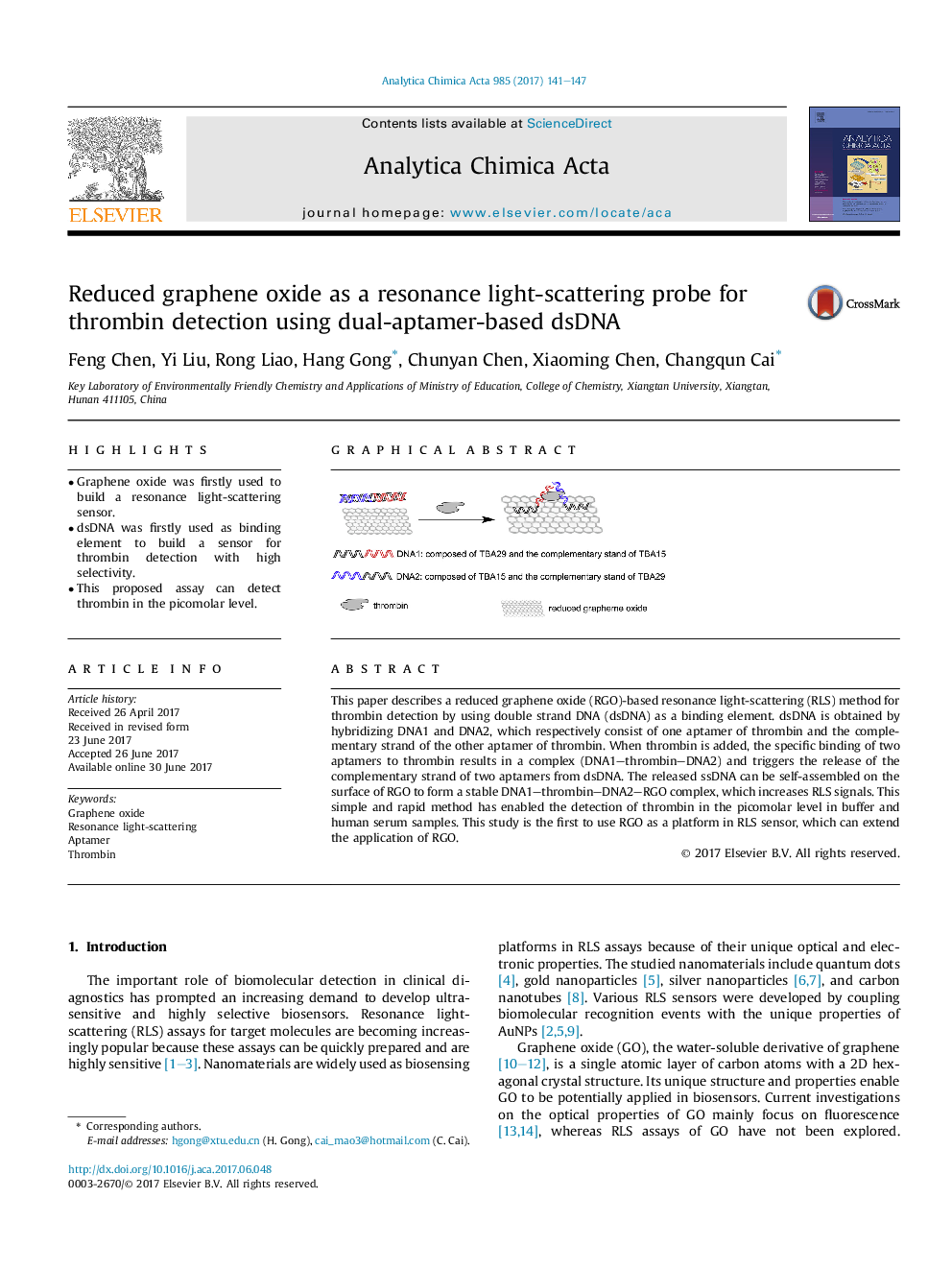| Article ID | Journal | Published Year | Pages | File Type |
|---|---|---|---|---|
| 5130723 | Analytica Chimica Acta | 2017 | 7 Pages |
â¢Graphene oxide was firstly used to build a resonance light-scattering sensor.â¢dsDNA was firstly used as binding element to build a sensor for thrombin detection with high selectivity.â¢This proposed assay can detect thrombin in the picomolar level.
This paper describes a reduced graphene oxide (RGO)-based resonance light-scattering (RLS) method for thrombin detection by using double strand DNA (dsDNA) as a binding element. dsDNA is obtained by hybridizing DNA1 and DNA2, which respectively consist of one aptamer of thrombin and the complementary strand of the other aptamer of thrombin. When thrombin is added, the specific binding of two aptamers to thrombin results in a complex (DNA1-thrombin-DNA2) and triggers the release of the complementary strand of two aptamers from dsDNA. The released ssDNA can be self-assembled on the surface of RGO to form a stable DNA1-thrombin-DNA2-RGO complex, which increases RLS signals. This simple and rapid method has enabled the detection of thrombin in the picomolar level in buffer and human serum samples. This study is the first to use RGO as a platform in RLS sensor, which can extend the application of RGO.
Graphical abstractA reduced graphene oxide-based resonance light-scattering sensor was used to detect thrombin by using dsDNA as a binding element. This sensor which has the specific structure of this dual-aptamer-based dsDNA has enabled the detection of thrombin in the picomolar level.Download high-res image (230KB)Download full-size image
